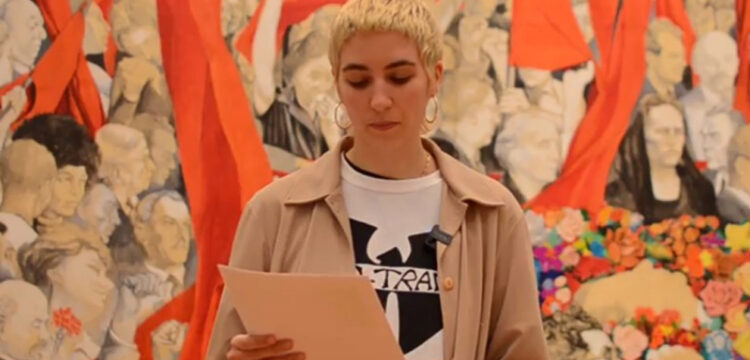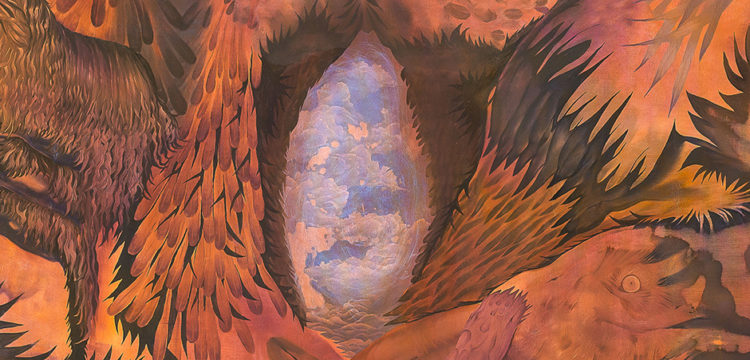When an Encounter is Found in a Stone
A slice of time to nourish new encounters, stories of future alliances
For the opening event Our Slice Of Time Together, Flip Project has presented works by Giulia Cenci, Michael Dean and Jorge Peris, accompanied by Allison Grimaldi Donahue’s performative reading and by Vicky K’s sound performance. Flip is now located in a 1950s noble chapel recovered after a long period of neglect, in the courtyard of a building in Via Giovanni Paladino near Piazzetta Nilo.
“This exhibition emerged organically and fluidly”—the first sentence Federico Del Vecchio , artist and curator of Flip Project, used to describe Our Slice of Time Together to me. For a few days, while I was trying to figure out how to outline this text, his words became a sort of mantra that strengthened, hour after hour, my conviction on how matter and the organic refer to relationships, keeping traces of stories.
I remember that for a while I became quite obsessed with the idea of “material witness”: the position that, even from a legal point of view, a material can become a key witness to a story, recording a certain amount of information. I was fascinated by the “active” nature of matter, its possibility to act and at the same time to contain actions in itself, in a continuous exchange with the surrounding environment, according to a system of information transmission that physicist Karen Barad called intra-actions.
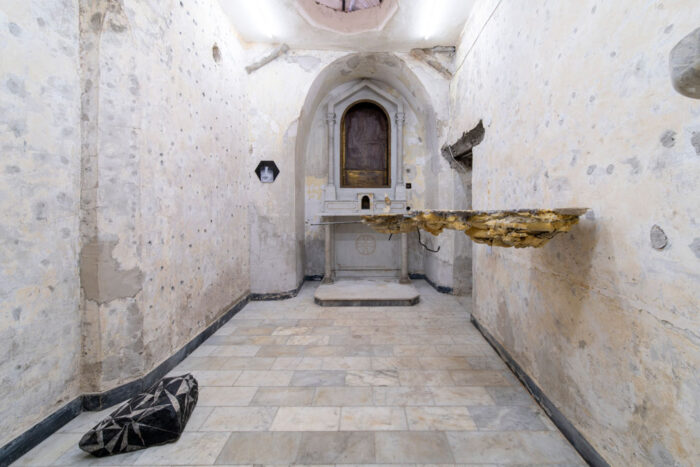
After two years of investigating these issues, I had become quite sensitive and easily prone to strange visions: every time someone entered my office—it was located along an obligatory passage to get to other services, giving me the opportunity to observe crowds of colleagues in the most diverse states of mind—I imagined a cloud of particles spreading in the room, altering my physical constitution and changing themselves thanks to my presence. It was my strange visualization of the idea of a constantly changing matter, which is co-constituted through continuous relationships and encounters.
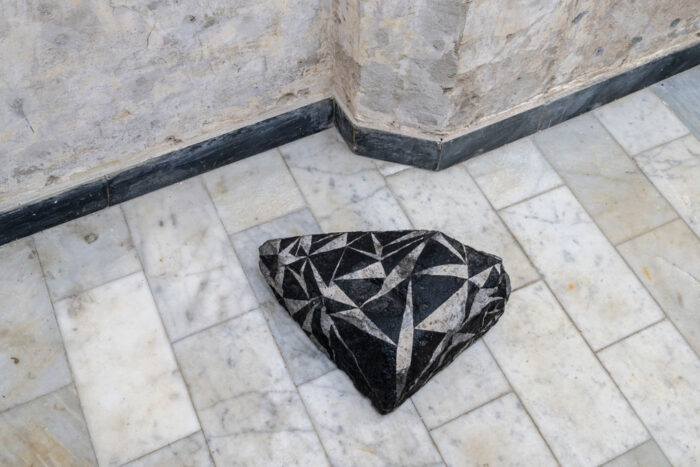
Returning to Naples and to the splendid noble chapel built in the 1950s in the courtyard of a palace in the heart of the city, now the new headquarters of Flip Project, the exhibition comes precisely out of interpersonal relationships and seems inevitably to lead us to reflections on a specific materiality that unfolds from sculpture to the enunciated word. Our Slice of Time Together seems to testify to how matter and its surfaces are not only physical entities circumscribed in static identities but how they can also become witnesses of narratives, of jagged, organic and dreamlike information, to be analyzed with science or left to emerge with imagination.
The invited artists are people with whom Federico Del Vecchio has shared various experiences: from a residency in Finland with Giulia Cenci, to nocturnal forays through Naples with Michael Dean, to long-term friendships such as with Jorge Peris, up to more recent encounters such as those with Allison Grimaldi Donahue and Vicky K. from his period spent in Bologna.
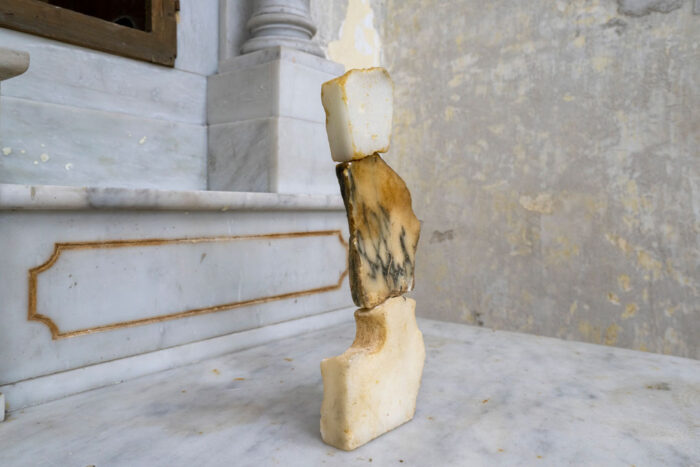
The works themselves can thus be observed as special sounding boards of this system of encounters not only between the artist/curator Del Vecchio, but between the artists and the city of Naples.
This ramps this face towards you towards this face than the floors face, 2007, is a work produced by Michael Dean for the residency EXPOSITO-Osservatorio Giovani Artisti Napoli, during which the artist developed a series of typographic characters—triangles, prisms, hexagonal shapes—written on a stone coming from the Quartieri Spagnoli. The writing actions, carried out in the urban space almost transforming it temporarily into an expanded studio, were documented by some photographs, in the exhibition Xerox hex, 2007, in which other spray-painting interventions on large rocks are visible. Dolmen (Rhapsody), 2014, is a gift from Jorge Peris to Federico, a miniature totem, composed of pieces of marble passed by oil as if to allow a release of energy, that inertial residue of centuries of sedimentation. Developed vertically, the sculpture finally recalls the musical compositions with only one movement, without a fixed scheme.
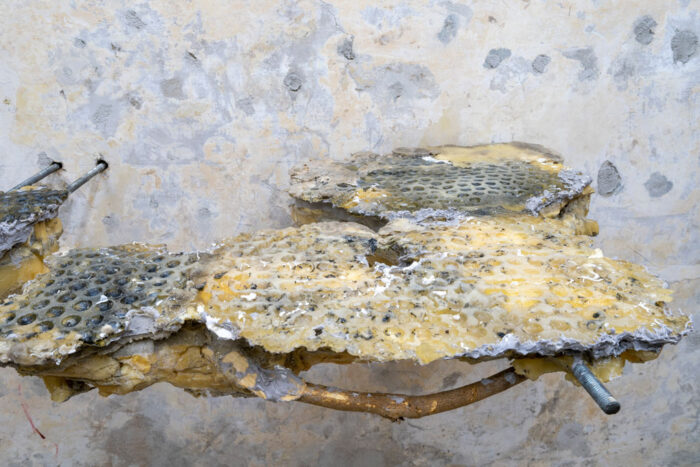
Layers, deposits, and impressions of materials define the surface and structure of Aprile 5006, 2017, by Giulia Cenci, part of a series of works in which the artist assembles plastic materials—in this case, the pattern of a plastic shower mat can be recognized on the flat surface—machinery components, logs, and remnants of old casts. As in a fracture in the earth, the work takes on a geological presence, carrying on itself traces of the artist’s old works that create a jagged mass to which disused industrial objects and debris of natural origin are bound, as in a calcification process.
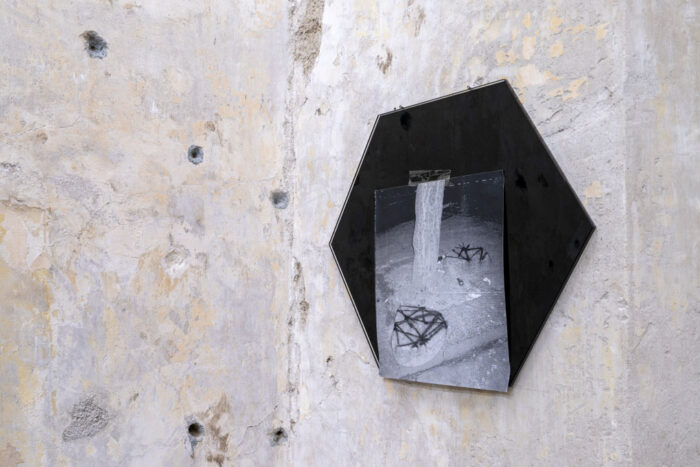
For a few months, Naples was also a landscape of inspiration for Allison Grimaldi Donahue: a visual backdrop of engaging readings and lively, overflowing thoughts. Now memories, these days have resurfaced in the writing of The Shapes Narcissus Sees: My Angles All Rest in Your Shadows, a poem and performance reading conceived for the occasion. Starting from I’m very into you, a book that collects the exchange of passionate emails between Katie Acker and McKenzie Wark, Grimaldi Donahue has composed a text that weaves together quotations, personal memories and descriptions of other stories. The author alternates with more rarefied reflections, a dense sequence—almost without pause—of images in which the body and its taking place in space become tangible, emerging vividly thanks to a writing of extraordinary sensitive richness. The text unfolds searching for traces of the possible value of a passing love, reflecting on its circumscribed temporality. What remains? In the background there always remains the conviction that our bodies will keep track of it.
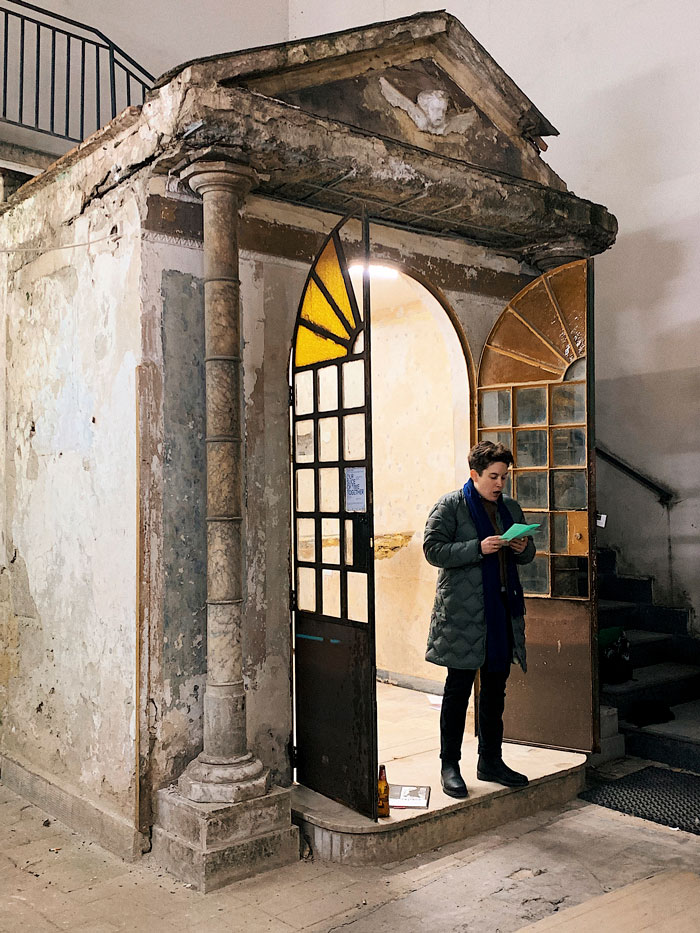
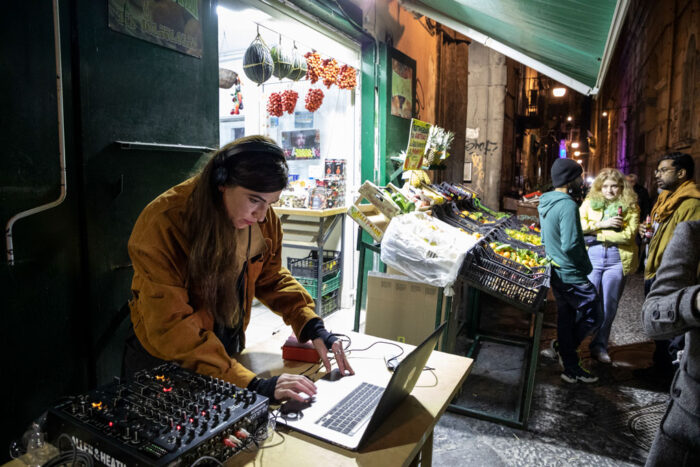
Finally, a background music, which from the alleys between the boxes of fruit and vegetables of a greengrocer adjacent to the entrance of the building, attracts people and pushes them as in a current inside the courtyard of via Giovanni Paladino. Vicky K. is the first of the artists Del Vecchio involved to interact with this connecting space between the neighborhood and the exhibition: a slice of time in which to nourish new encounters, stories of future alliances.




